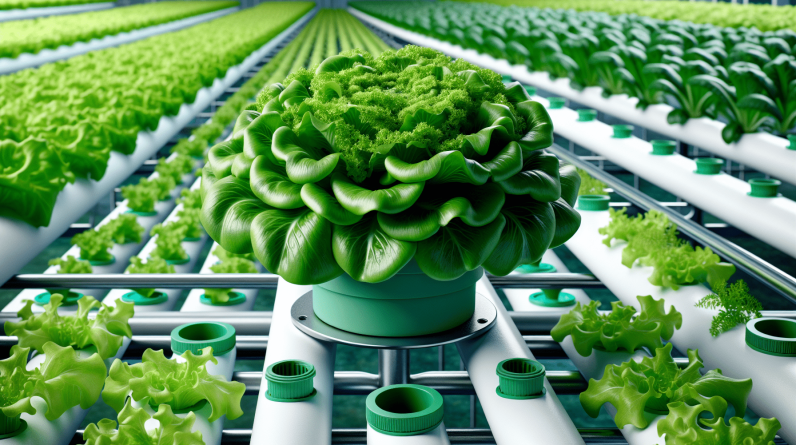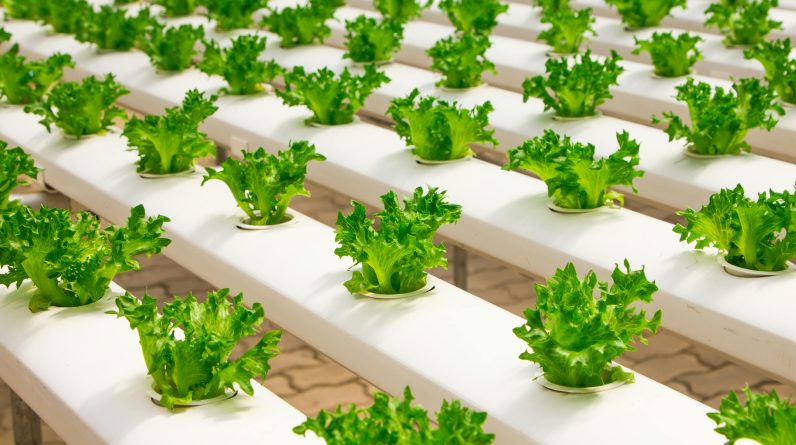
In this article, you will discover the fascinating world of hydroponic growing systems and the importance of harvesting and crop rotation within this innovative method. Hydroponics, a method that involves growing plants without soil, has become increasingly popular due to its efficiency and ability to produce high yields. We will explore how harvesting at the right time can maximize crop productivity and discuss the benefits of implementing crop rotation to maintain nutrient balance in a hydroponic system. So, let’s embark on a journey into the world of hydroponic farming and unlock the secrets of this unique and sustainable cultivation method.
Introduction
Welcome to the world of hydroponic growing systems! In this article, we will explore the many benefits of this innovative method of cultivating plants without soil. From minimized water usage to efficient space utilization, hydroponics offers a sustainable and year-round solution for crop production. We will also delve into the importance of harvesting techniques and crop rotation in maximizing yield and maintaining the health of your hydroponic garden.
Benefits of Hydroponic Growing System
Minimized water usage
One of the significant advantages of hydroponics is its ability to minimize water consumption compared to traditional soil-based farming. In a hydroponic system, the plants are grown in a nutrient-rich water solution, which is recirculated and reused. This closed-loop system allows for precise control over water usage and reduces waste, making hydroponics an environmentally friendly choice.
Minimized soil erosion
By eliminating the need for soil, hydroponic growing systems help minimize soil erosion. Soil erosion occurs when water or wind dislodges and carries away the top layers of soil, depleting it of essential nutrients. With hydroponics, the plants’ root systems are suspended in water or a growing medium, ensuring that the nutrient solution reaches them directly and effectively.
Optimal nutrient delivery
In a hydroponic growing system, nutrients are delivered directly to the plants’ roots through the water solution or growing medium. This allows for precise control over the nutrients’ composition and concentration, resulting in optimal plant growth and development. The plants have constant access to the necessary nutrients, promoting healthier and more robust crop yields.
Efficient use of space
Hydroponics offers an efficient use of space, particularly in urban or limited areas. With soil-based farming, plants require ample space to grow and spread their roots. However, hydroponics allows for vertical farming, where plants can be stacked or grown upwards, maximizing vertical space. This vertical concept enables growers to cultivate more plants in a smaller footprint, making it an ideal choice for urban agriculture.
Year-round crop production
Unlike traditional farming methods that rely on seasons and weather conditions, hydroponic growing systems enable year-round crop production. By controlling the environmental variables such as temperature, humidity, and lighting, growers can create the ideal conditions for plant growth at any time of the year. This consistent production allows for a stable supply of fresh and locally grown produce regardless of the season.

Harvesting in a Hydroponic Growing System
Determining the right time to harvest
Knowing when to harvest your hydroponic crops is crucial for maximizing their flavor, nutrition, and overall quality. Different plants have specific maturity indicators, such as color, texture, size, or taste. It is essential to familiarize yourself with these indicators and regularly observe and monitor your plants’ progress to determine the optimal time for harvest. Each crop may have slightly different signs of readiness, so research your specific varieties for guidance.
Preparing for the harvest
Before harvesting, it is essential to prepare your hydroponic garden for the process. Start by cleaning and sanitizing your tools to prevent the spread of diseases or pests. Prepare containers or bins for collecting the harvested produce and have them ready within easy reach. Additionally, ensure the environment is well-lit and ventilated to maintain the crop’s freshness during and after harvesting.
Harvesting techniques
Depending on the type of crop, there are various harvesting techniques for hydroponic plants. Leafy greens and herbs can typically be harvested by cutting the mature leaves or stems, leaving the younger ones intact for continuous growth. Fruiting vegetables, such as tomatoes or peppers, are usually picked when they reach their desired size, color, and ripeness. For root crops like radishes or carrots, gently remove the entire plant from the growing medium.
Post-harvest handling
Once you have harvested your hydroponic crops, it is crucial to handle them properly to maintain their freshness and quality. Immediately after harvest, rinse the produce with clean water to remove any debris or dirt. Dry them thoroughly to prevent moisture-related issues such as mold or rot. Store the harvested crops in proper containers or refrigeration to extend their shelf life and preserve their taste and nutritional value.
Maximizing yield and quality
To maximize your hydroponic crop yield and maintain high-quality produce, consider implementing proper harvesting techniques, such as harvesting the crop in stages to allow younger plants to continue growing. Additionally, regularly monitor your plants for signs of diseases or pests, and take immediate action to prevent spreading. Finally, keep detailed records of your planting and harvesting activities to track the success of different crops and make informed decisions for future harvests.
Crop Rotation in a Hydroponic Growing System
Importance of crop rotation
Crop rotation is a vital practice in hydroponic growing systems for several reasons. Firstly, it helps prevent nutrient depletion in the growing medium. Different crops have varying nutrient requirements, and rotating them allows the soil to replenish specific nutrients while others are utilized. Secondly, crop rotation reduces pest and disease pressure as many pests and pathogens are plant-specific. By rotating crops, you disrupt their life cycles, making it more challenging for pests or diseases to establish themselves. Lastly, crop rotation improves soil health by promoting the growth of beneficial microorganisms and preventing the buildup of harmful ones.
Preventing nutrient depletion
One of the main advantages of hydroponic growing systems is the ability to provide plants with precisely the right nutrients they need. However, continuous cultivation of the same crop can result in nutrient depletion in the growing medium. By rotating crops, you ensure that different plants with varying nutrient requirements are grown, allowing for balanced nutrient utilization and replenishment.
Reducing pest and disease pressure
By rotating crops in a hydroponic system, you can reduce the occurrence and impact of pests and diseases. Many pests and pathogens are plant-specific, meaning they rely on specific crops for survival and reproduction. By changing the crop type, you disrupt their life cycles and reduce their ability to thrive in your hydroponic garden. This reduces the need for pesticides and promotes a healthier and more sustainable growing environment.
Improving soil health
Although hydroponics do not rely on traditional soil, the growing medium can still benefit from improved soil health. Crop rotation in a hydroponic system helps improve soil health by promoting the growth of beneficial microorganisms and preventing the buildup of harmful ones. This leads to improved nutrient cycling, enhanced root development, and overall increased plant vigor and productivity.
Choosing suitable crops for rotation
When implementing crop rotation in a hydroponic growing system, it is essential to choose suitable crops that complement each other’s nutrient requirements and growth characteristics. Consider the nutrient demands of each crop and sequence them in a way that ensures balanced nutrient utilization and replenishment. Additionally, take into account the growth rates, sizes, and root system types to ensure compatibility and smooth transition between crop rotations.
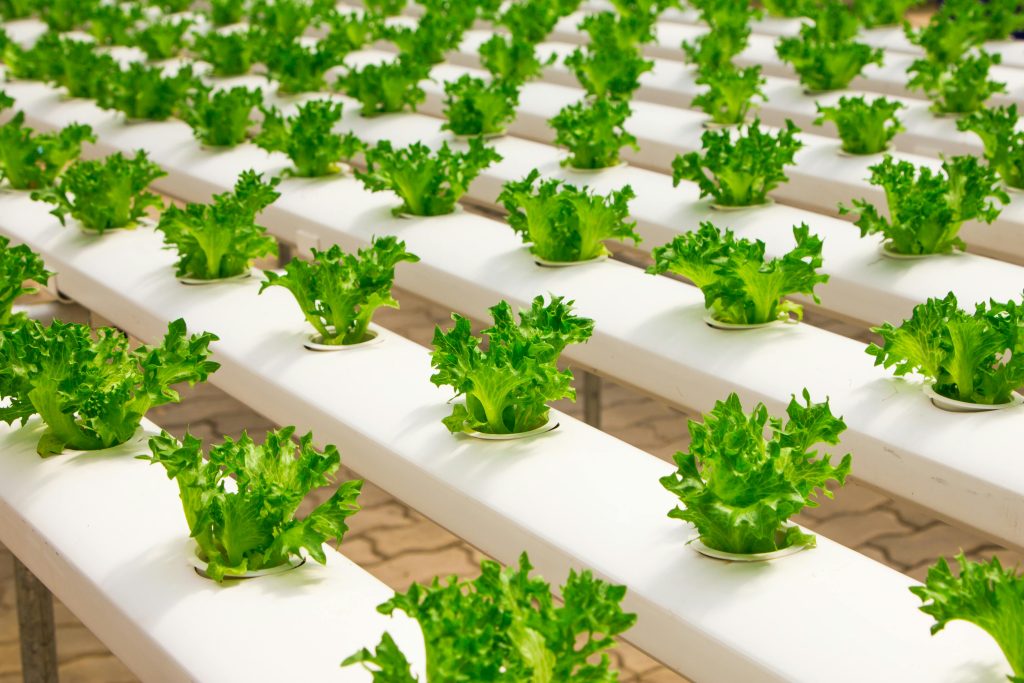
Implementing Crop Rotation
Planning the rotation schedule
To successfully implement crop rotation in a hydroponic growing system, it is crucial to plan a rotation schedule. Start by mapping out the available growing spaces or containers and dividing them into sections. Determine the number of crops to include in the rotation and assign each section to a specific crop. Consider the duration of each crop’s growth cycle and plan the rotation schedule accordingly, ensuring a seamless transition between crops.
Selecting compatible crops
When selecting crops for rotation in a hydroponic system, it is essential to consider their compatibility. Choose crops that have similar nutrient requirements and growth characteristics to ensure efficient nutrient utilization and avoid imbalances. For example, leafy greens like lettuce or spinach can be rotated with similar greens, while tomatoes could be rotated with other fruiting vegetables like cucumbers or peppers. Pay attention to the specific needs of each crop and plan the rotation accordingly.
Managing nutrient requirements
Proper management of nutrient requirements is crucial when implementing crop rotation in a hydroponic growing system. Different crops have varying nutrient demands at different stages of growth. Monitor the nutrient levels in the water solution regularly, and adjust the composition and concentration as needed to meet the specific requirements of each crop in the rotation. Keep detailed records of nutrient levels and adjustments to track the success of different crops and fine-tune your nutrient management practices.
Monitoring and adjusting
Continual monitoring is essential when implementing crop rotation in a hydroponic system. Regularly observe your plants for signs of nutrient deficiencies or imbalances, and take corrective measures promptly. Adjust the nutrient solution’s composition and concentration based on the specific needs of each crop in the rotation. Additionally, monitor the growth rates, overall health, and visual appearance of your plants to ensure they are thriving throughout the rotation.
Succession planting
Succession planting is another valuable technique to consider when implementing crop rotation in a hydroponic growing system. Instead of waiting for one crop to finish before starting another, stagger the planting times to ensure a continuous supply of harvested produce. As one crop nears the end of its growth cycle, start planting the next crop in the rotation. This way, you can fully utilize the available growing space and maintain a consistent harvest throughout the year.
Rotational Crop Examples
Leafy greens and herbs
Leafy greens like lettuce, spinach, and kale are excellent candidates for crop rotation in a hydroponic growing system. Consider growing different varieties of leafy greens in a rotation to maximize nutrient utilization and maintain a diverse harvest. Herbs such as basil, parsley, and mint can also be rotated with leafy greens, as they have similar nutrient requirements and do not grow too tall.
Fruiting vegetables
Fruiting vegetables, such as tomatoes, cucumbers, and peppers, can benefit from crop rotation in a hydroponic system. Ensure a balanced rotation by alternating between different varieties of fruiting vegetables to optimize nutrient utilization and minimize the risk of pests or diseases specific to a particular crop.
Root crops
Root crops, including radishes, carrots, and beets, can be rotated in a hydroponic growing system. These crops are typically harvested by removing the entire plant from the growing medium. Consider rotating different root crops to allow for efficient nutrient utilization and avoid nutrient depletion in the growing medium.
Legumes and cover crops
Legumes like beans or peas, and cover crops such as clover or vetch, are beneficial additions to a crop rotation in a hydroponic system. Legumes are known for their ability to fix nitrogen in the soil, which helps replenish nutrients. Cover crops add organic matter back into the growing medium, improving its structure and promoting the growth of beneficial microorganisms.
Perennial crops
Though hydroponics is often associated with annual crops, there are options for perennial crops as well. Perennial herbs like rosemary or thyme can be grown in a hydroponic system and rotated with other perennial herbs or compatible annual crops. Ensure the proper management of pruning and trains to accommodate the longer life cycle of perennial crops.
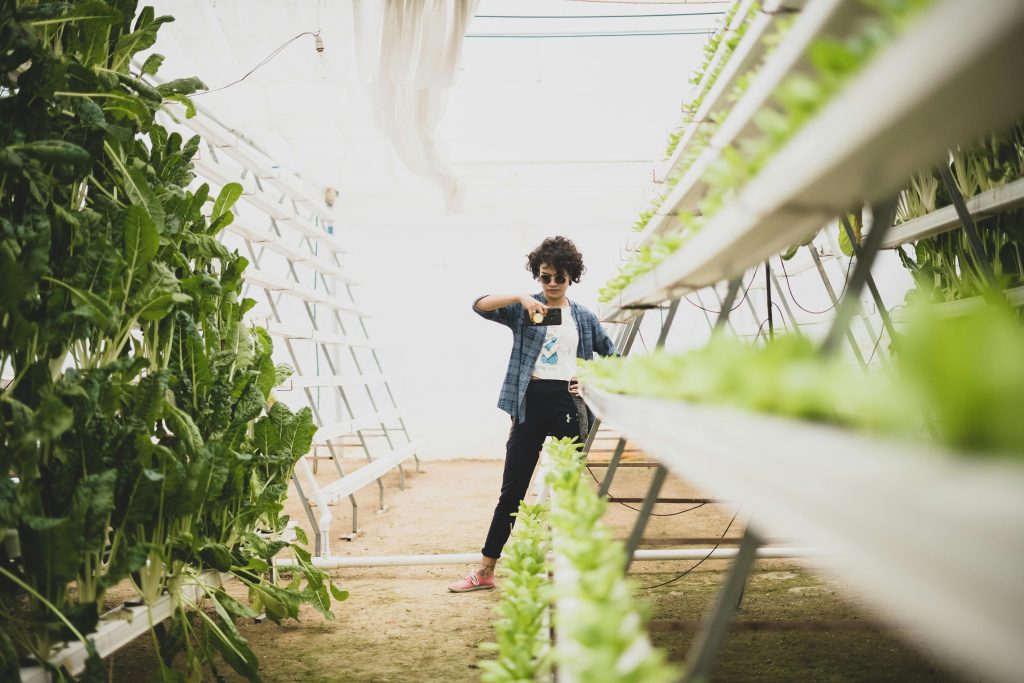
Considerations for Hydroponic Crop Rotation
Crop-specific nutrient demands
Understanding the nutrient demands of each crop is crucial when implementing crop rotation in a hydroponic growing system. Different plants require varying levels of macronutrients and micronutrients at different growth stages. Monitor the nutrient levels in the water solution and adjust the composition and concentration as needed to meet the specific requirements of each crop in the rotation.
Root zone sanitation
Maintaining proper root zone sanitation is essential for successful crop rotation in a hydroponic system. Regularly clean and sanitize the growing containers, nutrient solution reservoirs, and any other equipment to prevent the buildup of algae, bacteria, or fungi. Proper sanitation practices ensure a healthy growing environment and prevent the spread of diseases or pests between crop rotations.
Managing disease and pest resistance
Crop rotation can help manage disease and pest resistance in a hydroponic growing system. By rotating crops, you disrupt the life cycles of pests and diseases, making it harder for them to establish and spread. Additionally, consider implementing Integrated Pest Management (IPM) practices, such as regular scouting, the use of beneficial insects, or environmentally friendly pest control methods to further protect your crops.
Maintaining proper pH levels
Maintaining the proper pH levels in the hydroponic growing medium is crucial for the crop rotation’s success. Different plants have varying pH preferences, and growing medium pH affects nutrient availability. Regularly monitor the pH levels in the water solution and make adjustments as needed to ensure the crops’ optimal nutrient absorption and overall health.
Balancing crop varieties
When implementing crop rotation in a hydroponic system, it is essential to maintain a balance between different crop varieties. Ensuring diversity among rotating crops minimizes the risk of diseases or pests specific to a particular crop from spreading throughout the entire hydroponic garden. Additionally, planting a variety of crops enhances the overall aesthetics of your hydroponic setup.
Challenges and Solutions
Nutrient imbalances
Maintaining proper nutrient balance is crucial for successful crop rotation in a hydroponic growing system. Continuously monitor the nutrient levels in the water solution and adjust as needed to meet the specific requirements of each crop. Keep detailed records and utilize hydroponic nutrient calculators or expert guidance to fine-tune your nutrient management practices.
Disease and pest control
Crop rotation helps minimize disease and pest pressure in a hydroponic system, but it is not foolproof. Regularly scout your plants for signs of diseases or pests, and take immediate action if any issues arise. Implement a comprehensive Integrated Pest Management (IPM) strategy that includes practices such as proper sanitation, beneficial insects, or environmentally friendly pest control methods to effectively manage disease and pest threats.
Restrictions on space and resources
Hydroponic growing systems often require specific infrastructure and equipment, which may pose space and resource restrictions. To overcome these challenges, consider utilizing vertical farming techniques and maximizing available space. Optimize the use of water and nutrient solutions through proper recirculation and reuse. Additionally, conduct thorough research to find space-saving hydroponic setups that align with your available resources.
Crop compatibility issues
Ensuring compatibility between rotating crops is crucial for a successful hydroponic system. Research and plan your crop rotations carefully, considering nutrient requirements, growth rates, and root system types. Choose crops that have similar needs and complement each other’s growth characteristics to avoid nutrient imbalances, stunted growth, or root entanglement.
Continuous monitoring and record-keeping
Successful crop rotation in a hydroponic system requires continuous monitoring and record-keeping. Regularly observe your plants for signs of nutritional deficiencies, diseases, or pests, and make necessary adjustments promptly. Keep detailed records of planting and harvesting activities, nutrient levels, and any observed issues. This information will help you track the success of different crops and make informed decisions for future rotations.
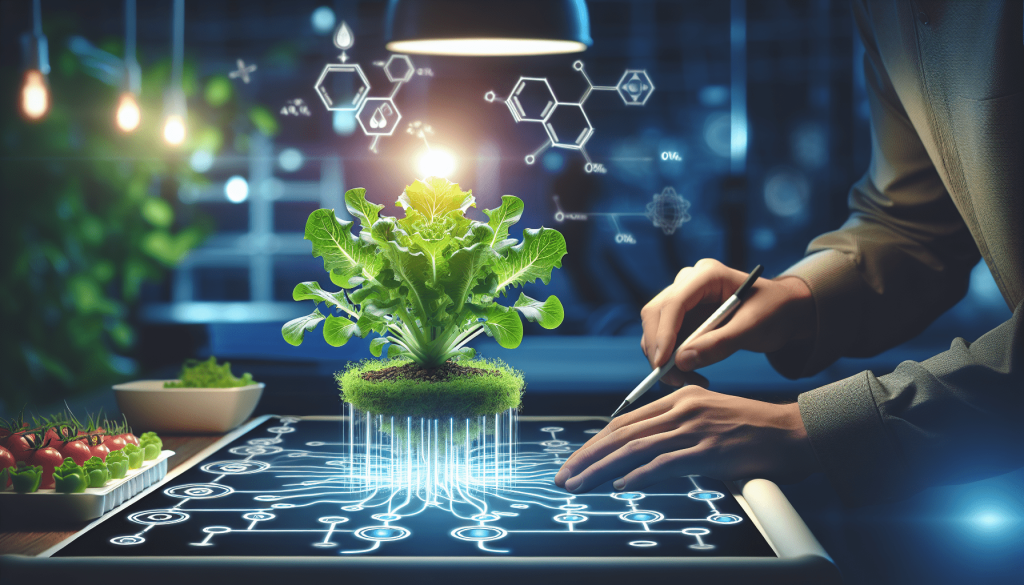
Conclusion
Congratulations on exploring the fascinating world of hydroponic growing systems! By implementing proper crop rotation techniques and maximizing the benefits of this innovative method, you can enjoy the minimized water usage, reduced soil erosion, optimal nutrient delivery, efficient space utilization, and year-round crop production. Remember to carefully plan your rotation schedule, select compatible crops, and manage nutrient requirements for a thriving and sustainable hydroponic garden. With proper harvesting techniques and attention to crop rotation, you can maximize your yield and maintain the health and productivity of your hydroponic crops. Happy growing!
Related Content
- Hydroponic Gardening vs. Traditional Soil Gardening
- The Hidden Benefits of Hydroponic Nutrients Revealed
- 10 Effective Hydroponic Lettuce Growing Tips for 2025: The Ultimate Guide
- 10 Effective Hydroponic Gardening Tips for a Thriving 2025 Garden
- Creating a Thriving Garden with Hydroponic Vegetable Systems




